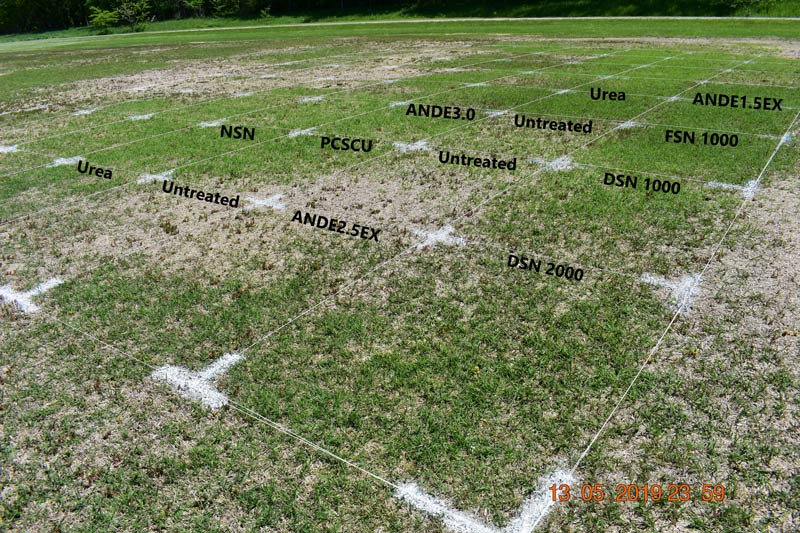
Photo by Anthony Goldsby
Late-season applications of nitrogen to bermudagrass in the southern U.S. have been shown to enhance turf color without affecting cold tolerance, but similar treatments in the northern transition zone have been thought to increase the potential for winter injury.
At the Kansas State Olathe Horticulture Research and Extension Center in Olathe, Kan., 11 nitrogen sources were applied in late summer and early autumn of 2018 to provide a total annual nitrogen level of 87 pounds/acre (98 kilograms/hectare) to evaluate effects on fall color and spring green coverage of Riviera bermudagrass. Treatments included experimental coated urea fertilizers, nitrogen sources containing urease inhibitors, urea, and non-treated turf.
The low winter temperature during 2018-2019 in Olathe, Kan., was -5 F (-21 C), and temperatures were below 10 F (-12 C) on 16 days. Significant winter injury occurred in the experimental area. Turf color in late October was positively correlated with green coverage evaluated in May. For example, bermudagrass treated with an experimental coated urea had a color rating of 3.5 (1 to 9 scale; 9 = dark green) in late October and 44% green coverage in May, whereas non-treated turf had a color rating of 1.5 in late October and 8% green coverage in May. None of the nitrogen sources enhanced fall color or spring green-up more than urea.
Treatments were reapplied in autumn 2019, but mild winter temperatures (low of -2 F [-19 C] and five days below 10 F [-12 C]) revealed that no fertilizer sources influenced bermudagrass green-up in spring 2020 compared with non-fertilized plots.
This research suggests late-summer/early-autumn applications may have the potential to enhance late-season color and encourage spring green-up without increasing bermudagrass winter injury in the upper transition zone.
— Anthony Goldsby, Ph.D., The Andersons, Kansas City, Mo.; Jack D. Fry, Ph.D.; Manoj Chhetri; and Megan M. Kennelly, Ph.D., Kansas State University, Manhattan, Kan.
Editor’s note: An earlier version of this summary was published in the 2019 ASA-CSSA-SSSA Meeting Abstracts, ASA-CSSA-SSSA, Madison, Wis.
Teresa Carson is GCM’s science editor.